Japanese Beauty Standards || Discover the History and Evolution of Aesthetics
Japanese Beauty Standards || Interesting Facts (Past and Current)
Japanese beauty standards have uniquely evolved throughout history, shaped by a unique combination of traditional cultural values and modern influences.
Firstly though, let’s learn a couple of new words related to today’s topic – we are a language school after all!
Beautiful in Japanese is 美しい / 綺麗 (utsukushi うつくしい / kirei きれい)
A beautiful person in Japanese is 美人 (bijin びじん)
So let’s discover if ideal women in the past are still considered beautiful in Japan?
We are going to head back in time and trace the evolution of Japanese beauty standards as well as the makeup trends in the past.
BONUS || Scroll down for some useful makeup and cosmetic flashcards to help you learn Japanese as you go.
Japanese Beauty Standards || Jomon Period
Japanese Beauty Standards || Yayoi Period
Japanese Beauty Standards || Asuka and Nara Period
Japanese Beauty Standards || Heian Period
Japanese Beauty Standards || Kamakura Period
Japanese Beauty Standards || Edo Period
Japanese Beauty Standards || Meiji and Taisho Period
Japanese Beauty Standards || Showa Period
Japanese Beauty Standards || Heisei and Reiwa Period
Japanese Beauty Standards || Toxic Sides of Japanese Beauty Standards
Japanese Beauty Standards || FAQs
Jomon Period (Approx 16,000 to 850 B.C.)
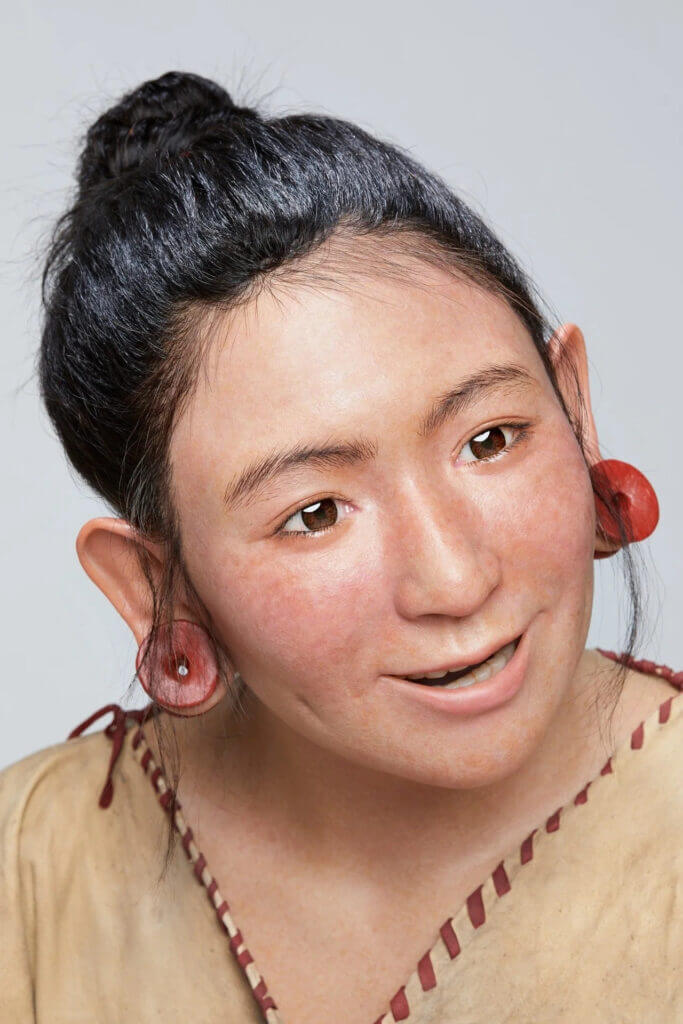
The Jomon people had distinct facial features, such as high cheekbones, wide noses, and large eyes.
During this period, makeup trends included facial decorations with clay and patterns, as well as hair decorations made from shells.
But the purpose of makeup was different from today.
Makeup for the Jomon people was an amulet to ward off evil spirits and disasters.
They painted their faces and bodies with red paint as a symbol of power.
Yayoi Period (Approx 10th to 3rd Centuries B.C.)
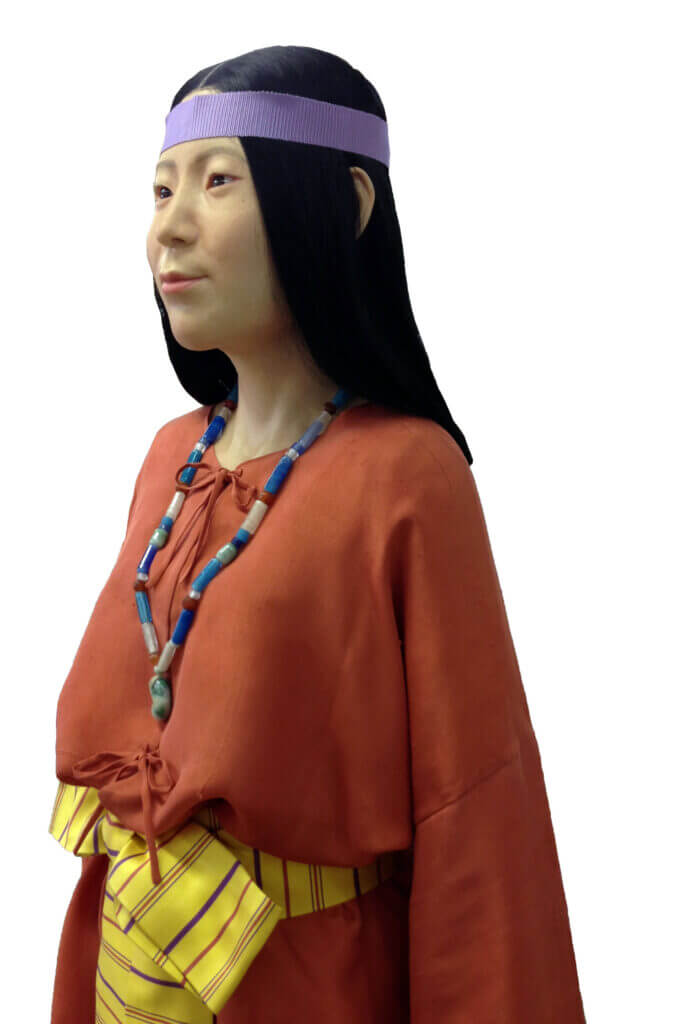
The Yayoi people’s faces are quite the opposite of the features of the Jomon people.
They had flat noses, thin lips, and a long face shape.
During the Yayoi Period, there was an influx of people from the Korean Peninsula and China to Japan, which drastically changed the country’s physical characteristics.
As the Yayoi people gained power and took over the land, they considered themselves superior to the Jomon people.
The Jomon people’s faces came to be seen as barbaric.
So the features of the Yayoi people’s faces were considered elegant and beautiful.
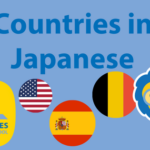
27 Country Names in Japanese 🌍 Your Complete Guide
Countries in Japanese – Interested in learning some country names in Japanese? Some actually translate and sound very similar to English, come and see!
Asuka (592-710) & Nara Period (710–794)
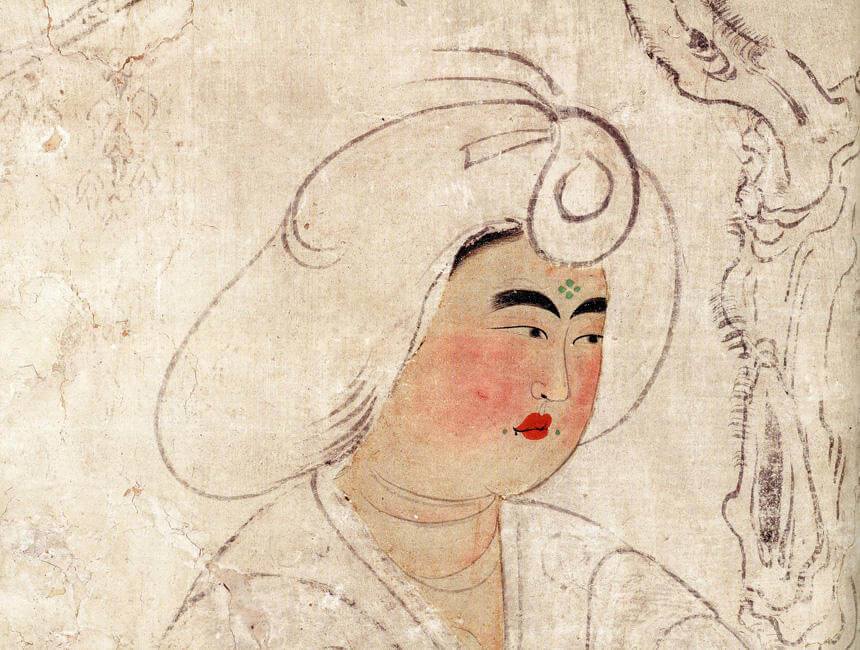
The beauty standard in this period was chubby, almond eyes, thick eyebrows, and a small mouth.
The first face powder (おしろい oshiroi) and lipstick (口紅 kuchibeni) were brought from the Sui Dynasty.
This is the very beginning of the aesthetic sense of having white skin and red lips, which continues to this day.
As the Chinese culture was widely accepted in society, the Tang makeup method of colorfully painting flowers and stars on the forehead and mouth became popular.
During the Asuka and Nara periods, the makeup began to be used to look more attractive, just as people do today.
Makeup was also a tool to indicate status and social class.
Heian Period (794–1185)
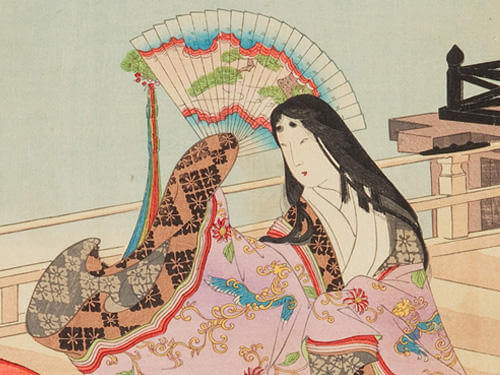
Women who removed all of their eyebrows and painted them with black ink were considered beautiful.
It is surprising since the current view is that shaving all eyebrows is seen as a symbolic feature of gangs.
Besides, black-dyed teeth (お歯黒 ohaguro), white skin, and long black hair were the features of beautiful women.

A Basic Guide to Japanese Makeup (+ New Vocabulary & Flashcards)
If you want to learn how to wear makeup like Japanese people, let’s learn the basics of Japanese makeup, current trends, and some useful vocabulary today.
Kamakura Period (1185–1333)
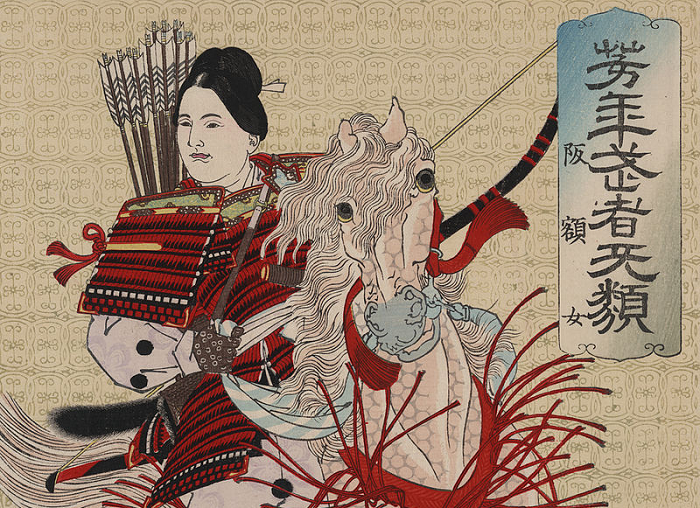
In this period, as the samurai ruled, female dress changed from elegant to active, and light makeup was preferred.
Until the Heian period, today’s daily hygiene habits, such as bathing and combing hair, were done a few times a year.
But in this period, it increased to about once every five days.
This change brought a new norm for skin care, and clear white skin was considered more beautiful than white skin coated with white makeup powder.
Edo Period (1603-1868)
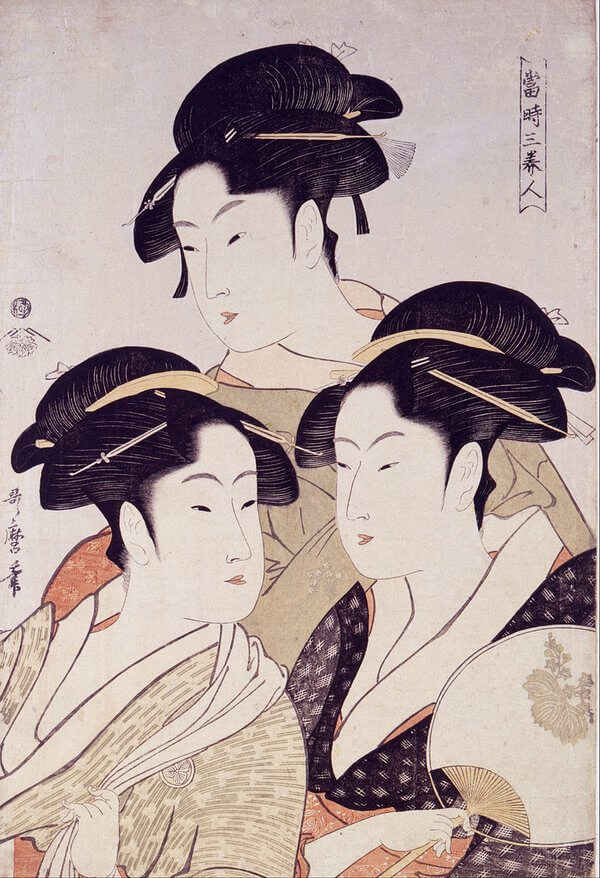
After the end of the Kamakura period, makeup spread to the masses.
This means women in various social classes started to enjoy dressing up by getting inspiration from Nishiki-e (錦絵 にしきえ), which is a woodblock print or makeup guide.
The beauty standard in the Edo period was white skin, a small mouth, and, uniquely, Fuji-bitai (富士額 ふじびたい), which refers to hairline shapes like Mt. Fuji.
Women in Ukiyo-e (浮世絵:うきよえ) were portrayals of ideal women at that time.
Meiji (1868–1922) & Taisho Period (1912–1926)
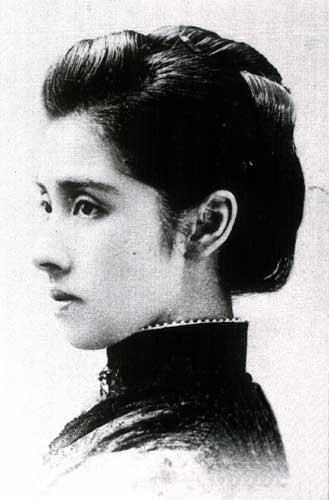
We head towards more modern times now…
In the 19th century, the Meiji government tried to adopt European cultures to promote modernization.
Strongly influenced by the West, a face similar to that of Caucasians was considered beautiful.
Caucasian features such as blond or brown hair, large or blue eyes, thin lips, a high nose, and a smart body shape were admired by Japanese women.
Showa Period (1926–1989)

In the postwar period, cosmetics and makeup were widely covered in the mass media.
The beauty standards were almost the same as those we have today: white skin, large eyes with double eyelids, and a curvy but thin figure.
Surprisingly, in the 1970s and 1980s, there was a rare phenomenon where tanned skin became a new aesthetic.
But as the ozone layer depletion was reported, UV exposure has become a concern and having white skin came back as a beauty standard again.
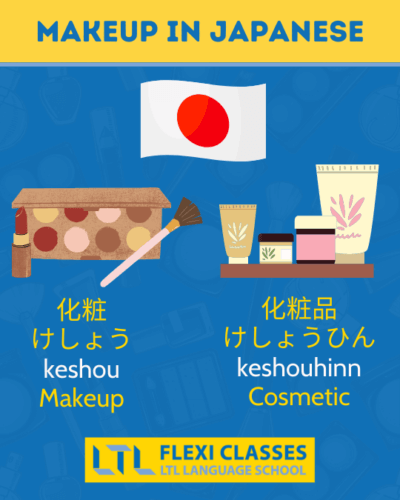
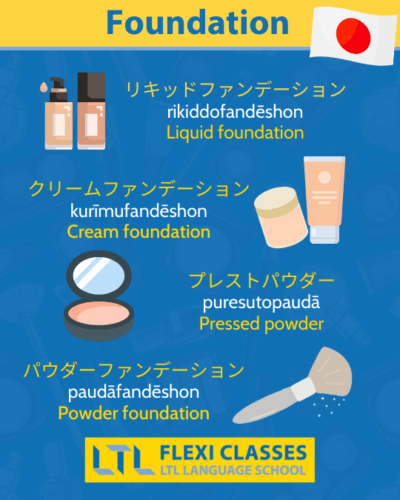
Heisei (1989–2019) & Reiwa Period (2019–present)

The beauty standards in these periods are the same as they were in the Showa period.
But the current trend in fashion and makeup styles have become diverse.
Since the late 1990s, Gyaru (ギャル) has developed as a new Japanese beauty standard from women’s viewpoint.
With the great popularity of the singer, Namie Amuro, Gyaru became a new style for young women.
As she had brown hair, many women felt comfortable with trying another colour besides black.
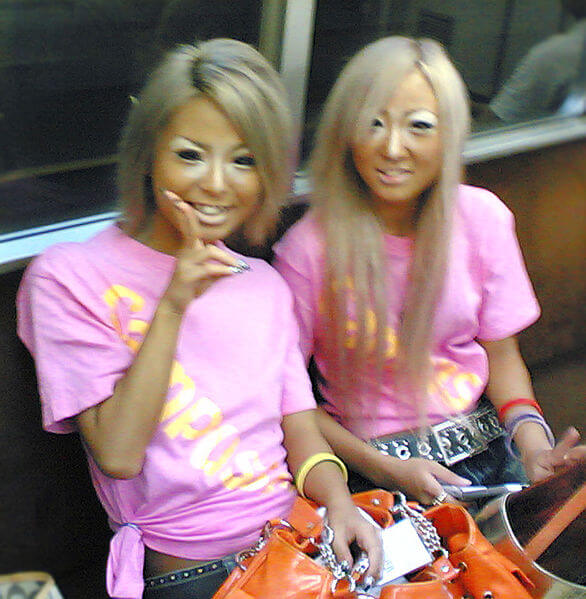
Gyaru has some types depending on their fashion and makeup looks, but all of them were completely opposite from the widespread beauty standards of wearing natural makeup on white skin.
For example, from the late 1990s to the early 2000s, there was a style of gyaru called Ganguro (ガングロ literally meaning super black).
It involved dark tanned skin with blonde hair as the image here shows.
This cultural trend quickly gained traction and created a new way for women to express themselves outside of traditional beauty standards.
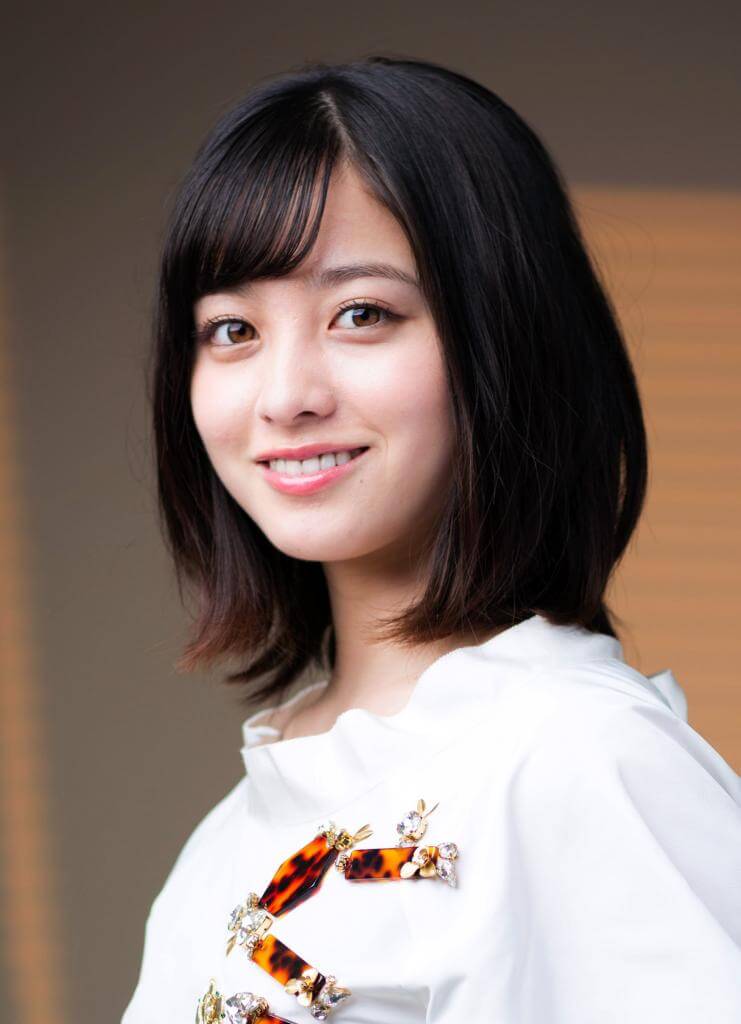
Although the majority of Japanese follow the normal beauty standards, some rebellious trends like gyaru exist to express themselves without conforming to traditional beauty standards too.
Gyaru still exists, but it has lost some of its popularity from the past, and natural makeup remains as a norm today.
Actresses and models also wear natural makeup, and they have fair white skin, double eyelids, and thin figures too.
An actress, Kanna Hashimoto, is an example of a woman who fits into the beauty standard today.
Toxic Sides of Japanese Beauty Standards
Although beauty standards have advanced female makeup culture, it is also true that some Japanese women feel pressured or lose self-confidence by the demanding beauty standards.
Puri-Kura and Kakou-Apuri
Puri-Kura (プリクラ abbreviation of Print Club プリント倶楽部) is a photo booth that you can usually find in every arcade or shopping mall.
After we pose inside the booth several times, it lets us paint or insert text as well as get some effects and filters on our faces.
Taking Puri-Kura is a popular after-school activity, especially for Japanese high school girls.
Similarly, Kakou-Apuri (加工アプリ the app that let you apply filters to your photos) has developed to the level that you can’t easily tell if the photo is edited or not.
Although using them to look cuter sounds fun, it is not rare that young girls feel insecure about their natural faces and never post their unedited photos on social media.
Besides, ever since wearing face-masks has become a part of our life, plenty of people worry that others would think they are mask fishing (マスク詐欺 masukusagi).
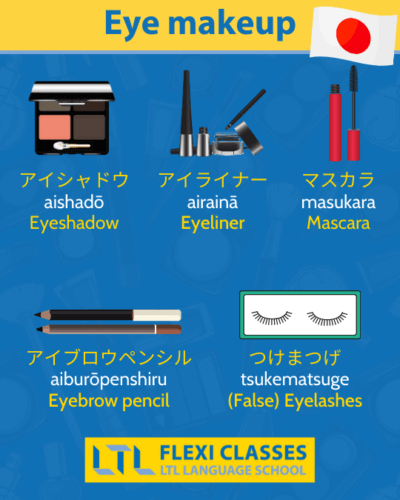

Weights
As the beauty standard suggests being skinny and having curves, going on a diet is generally quite normal for Japanese women.
There are three types of ideal weight in Japan, based on Body Mass Index (BMI):
- Standard weight (標準体重 hyoujuntaiju)
- Beauty weight (美容体重 biyotaiju)
- Cinderella weight (シンデレラ体重 shinderera taiju)
| Official standard BMI by WHO | 18.5-24.9 |
|---|---|
| BMI for Standard Weight | 22 |
| BMI for Beauty Weight | 19-20 |
| BMI for Cinderella Weight | 18 |
FUN FACT || The name, Cinderella weight is based on the idea that Cinderella was a woman who didn’t break the glass shoes and was easily carried by the prince.
ON THE FLIP SIDE || Cinderella weight suggests achieving underweight as a beauty, so these widespread standards for weight can be toxic, especially for adolescents.
The posts with the table like the one below are widespread on social media to encourage women to be slim.
| Height | Standard weight | Beauty weight | Cinderella weight |
|---|---|---|---|
| 158cm (Average height) | 54.9kg | 47.4kg | 44.9kg |
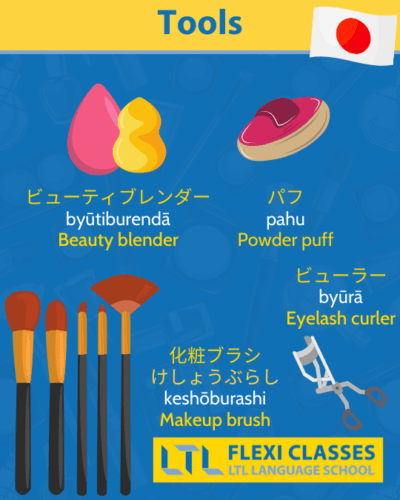
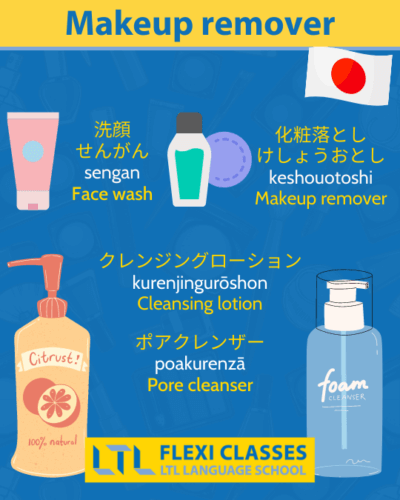
That concludes our look at Japanese beauty standards. What is your opinion?
Do you like to follow these trends or do you think they are a toxic trait of the modern day society? Join the debate and comment below.
If you enjoy learning about beauty, cosmetics and makeup in Asia you might also enjoy reading these posts:
- Discover lots of new words related to makeup in Japanese
- Learn about beauty standards in China
- Find out 60+ words related to makeup in Chinese
- Discover how Chinese and American makeup differ
- Learn about the beauty standards you’ll find in South Korea
- Discover beauty standards in Russia
Japanese Beauty Standards || FAQs
When did makeup become popular in Japan?
Since the end of the Kamakura period (1185–1333), makeup was no longer only for the women in higher social classes, but for the masses.
How come Caucasians facial features become the Japanese beauty standard?
It was influenced by the Meiji government’s policy to modernize Japanese society by adopting Western culture.
What does Gyaru (ギャル) mean?
Gyaru is a popular fashion and makeup style among young Japanese women from the 1990s to 2000s.
Gyaru doesn’t follow the traditional beauty standard.
What does “Cinderella weight” mean?
Cinderella weight is an ideal weight for achieving the figure as the beauty standard suggests.
The name, Cinderella weight, is based on the idea that Cinderella was a woman who didn’t break the glass shoes and was easily carried by the prince.
How much is the “Cinderella weight”
According to Japanese beauty standards the Cinderella weight is 44.9kg.
Want More From LTL?
WANT TO LEARN JAPANESE? Check out our online Japanese courses here.
We offer a 7-day free trial to all new students where you can study 24/7.
What about studying Japanese in Japan instead? We’ve got your back. Our Japanese courses in Tokyo can either be taken in small groups of no more than 5 students or individually for a more tailored experience.
We even offer incredible homestay experiences in Tokyo as well.
Come and be a part of this amazing community.









4 comments
[…] Edo-era Japan, women shaven or have their hair pinned back known for achieving a widow’s peak FujibitaiOr to the top of Mount Fuji Matha,” says […]
[…] Edo-era Japan, women shaven or have their hair pinned back known for achieving a widow’s peak FujibitaiOr to the top of Mount Fuji Matha,” says […]
[…] late Edo-era Japan, women shaved or pinned back their hair to achieve a widow’s peak, known as fujibitai, or Fuji forehead for the mountain peak,” Gibson […]
[…] sofas that embody Japanese elegance and peace. Discover how to create a peaceful living space with Japanese beauty and modern […]